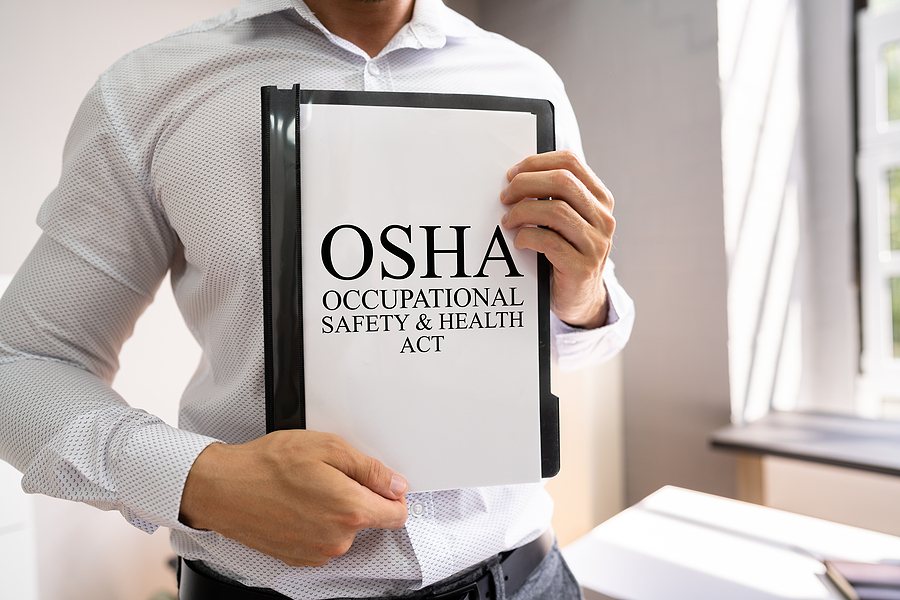Common OSHA Violations and How to Keep them from Occurring in Your New Mexico Workplace

After the industrial revolution, employers start to hire more workers to meet the market demands. But unfortunately, no guidelines for workers safety were available at that time. Until 1970, there was no governmental body in the USA to overlook these incidents, injuries and deaths caused by employer negligence. In 1970, the government approved the establishment of the Occupational Safety and Health Administration (OSHA). The sole purpose of this organization is to enforce workplace safety practices, protect the workers’ rights, and spread awareness in workers about their on-site protection rights.
What is meant by OSHA Violations?
The safety of the workers on the working site must be the priority of any employer. For that reason, OSHA time to time release a list of standards that must be followed on the worksite. All companies and employers are bound to enforce these standards. Still, some companies failed to comply with these standards and do violation of OSHA regulations. These OSHA violations result in a heavy fine or shut down the working site in a worse scenario.
List of Common OSHA Violations
OSHA publishes the updated list of OSHA violations every year on their site. Most of these violations are minor and often happens at the working site due to a lack of knowledge. Few violations are serious, and contractors may be fined or prevented from work by OSHA. In the following, we will be going to discuss common OSHA violations and ways to avoid them.
Fall Prevention
Most of the time, workers have to work at elevated working sites. The risk of slip and fall from higher working sites is greater as compared to ground sites. A report shows that more than 300,000 people get injured, and more than 300 causalities occur every year in the USA by falling from height. Slipping and falling from heights is a persistent threat, and companies should follow OSHA safety precautions.
Safety Precautions
- Keep the working sites clean of water, debris and clutter
- Install powerful lights at the worksite.
- Use warning signboards to keep workers away from hazardous worksites.
- Provide workers with OSHA-recommended footwear.
- Regularly inspect the integrity of scaffolds or ladders.
- Install side railings and hooks along the elevated pathways for support.
Hazard Communication with Workers
The materials and chemicals used at the working site pose a major threat to the safety of the workers. If workers are aware of the nature of chemicals and materials in use, they can protect themselves better. The OSHA Hazard Communication plan can be used for this purpose. This plan comprises of four parts:
- Written details of the safety program.
- Comprehensive labels and signs for warning.
- Datasheets on material safety
- Coaching sessions for workers training.
Training sessions are necessary to educate workers. So, they can easily understand the written details of the safety program and warning signs.
Protection of Respiratory Airways
During working on the worksite, a worker is prone to dust particles, metal scraps, poisonous gases and chemical fumes for inhalation. Prolong exposure to these elements can lead to serious respiratory ailments. An employer or contractor must provide OSHA-approved masks or respirators to his workers. These respirators come with an air filter, which filters the dust particles, gas fumes and prevent them to reach the lungs.
Safety Precautions
- Ensure that mask is tightly fit and completely covers the mouth.
- Workers with huge beards may face difficulty in wearing respirators. So, they should trim beard according to respirator adjustment.
Scaffolding
Scaffolding refers to the equipment required by workers to build, clean and repair at a certain height. According to OSHA, the major reason for causalities at the worksite is weak or substandard scaffoldings. The guidelines provided by OSHA for the safe use of scaffoldings include:
- Use guardrails for scaffoldings that are higher than 10 feet.
- Daily inspection of the guardrails, planks or decks that make the floor of scaffoldings.
- Install side ladders or hooks for workers to safely get off and on the scaffoldings.
- Ensures that gap between planks or decks remains the same.
- To avoid tripping, always place the scaffold at a solid and balanced surface.
Guiding workers about the proper use of scaffolds and their functions can reduce the chances of injuries.
Ladder
A ladder is also an important piece of equipment used to reach higher places at the worksite. Ladders of different sizes and different materials are used at the worksite according to requirements. OSHA guidelines about ladder use include:
- Make sure that ladder steps are not loose, wet or slippery.
- The ladder should place on levelled ground.
- Regular inspection of side locks integrity while the ladder is open.
Lockout/Tagout (LOTO) Protocol to Control Hazardous Energy
The term hazardous energy refers to the waste material or debris exudate by machines used at the worksite. Such materials released in the form of debris or scraps can injure the workers. LOTO protocol is the best way to avoid this OSHA violation. The guidelines of LOTO protocol include:
- Educate the workers about the details of the LOTO protocol.
- By regular inspection of the machines in use.
- New machinery requires special monitoring and observation.
- Always purchase and use OSHA-approved mechanical goods.
Powered Industrial Trucks and Forklifts
On-site incidents caused by the use of powered industrial trucks or forklifts are ranking among the top 10 OSHA violations in the USA. The use of forklifts is common in different industries, that’s why skilled personnel should hire to use them. OSHA has issued detailed guidelines about forklift use, selection, driver criteria etc and its violation results in heavy penalties by OSHA. Following are the guidelines about the use of forklifts at the worksite:
- All workers must be educated about forklift use by the training sessions.
- Mark the boundaries where forklift can or can’t be used.
- Always hire a licensed worker for operating a forklift.
Protection of Eye and Face
Many works demand the direct contact of workers with hazardous, chemical or radical materials. For these worksites, wearing eye and face protection gear becomes a necessity for the workers working there. Following are the OSHA guidelines which an employer should have to follow to ensure the safety of workers:
- Proper training of workers about possible hazards and handling of these materials.
- Installation of eyewash stations at the worksite in case of an emergency
- Educate workers about First aid techniques.
Fall Protection Training Program
The workers of companies that deal with high building work are more prone to slip and fall from scaffolds. OSHA guide such companies to establish a comprehensive fall protection training program for their workers. Any negligence in this regard is considered an OSHA violation and handled severely. To avoid this violation, companies should act upon the following guidelines:
- Every worker must go through the fall protection training program.
- Every employee should master the four-level of this program, which includes. 1) completely aware of potential hazards, 2) authorized user, 3) competent personnel, 4) qualify for the fall training program.
- Companies should maintain a record of every employee training and skill.
Machinery Protection
All the machines being used at the worksite must be guarded properly. The scrap and sparks flying and moving parts of the machine can cause severe injury to any worker. To avoid this type of OSHA violation:
- Must install the safety guards.
- Arrange training sessions for employees to understand the importance of machinery protection.
- Regularly inspect the machine guards being used and replace the old ones.
OSHA guidelines are designed to ensure the safety of workers at the worksite. By following them, chances of injures and causalities are reduced to a minimum level. Companies can avoid OSHA violations by rectifying these common mistakes and as a result, don’t have to incur any penalty or fine. Creating a safe working environment for workers also increase the reputation of the company.
